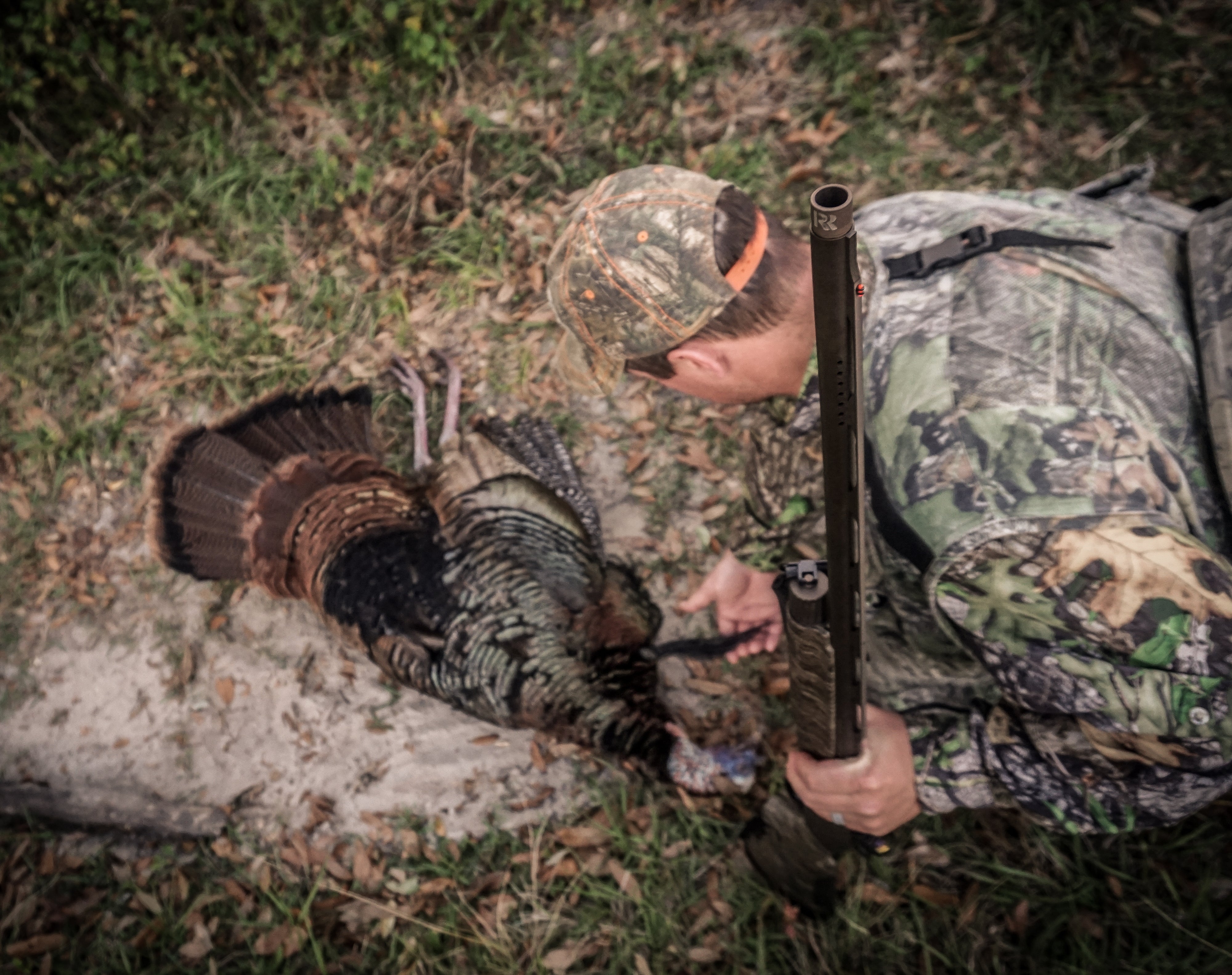Sound School: 2 Sounds For Tagging More Gobblers

By: Michael Turbyfill
If you’ve hunted turkeys for any length of time, you’ve seen marketing gimmicks come and go. Some new call or miracle sound that brings gobblers running from miles - sound familiar?
I believe turkeys are turkeys - yesterday, today and tomorrow. They have instincts, habits and preferences that typically don't change if left undisturbed.
In this post, I'll make a strong argument for two tactical sounds that might lead to the demise of more longbeards than any others. And you don't need a new gimmick to simulate these sounds.
1. Flapping a Cap or Wing
I’m often asked how I call to roosted gobblers and since scenarios are all different, there are no rules. However, there is one sound I almost always simulate when I’m working a gobbler at sunrise.
I typically flap my cap or a turkey wing to imitate a hen pitching down from the limb. The reason is simple.
It’s the one noise every hen HAS to make on a daily basis.
Think about it this way. Some days the woods still and silent. Some days hens are talking. The one noise a gobbler is conditioned to hear is a hen flying down from the limb - whether she calls or not while roosted.
If you put yourself in the gobbler’s shoes (or feet), the first big move of the day he makes is how and when to fly down off his roost. Imitating a hen flapping her wings as she flys down tells the gobbler “I’m getting started with my day and if you want to be a part of it, come on!”
If you sound like a hen flying down, you're putting the ball in his court to make a move or be left behind.
Turkeys are large birds and they almost always make a bunch of noise flying up or down from trees. Slapping your arm, leg, or a tree trunk loudly, in a similar rhythm to how a turkey takes flight, is as natural of a call as you can make in the wee hours of morning.
2. Scratching Leaves Like a Feeding Hen
Much like they make noise in flight, turkeys in the woods are noisy as well.
When a hen turkey feeds through the timber in the spring, she’s in constant motion when she’s calm. She’s picking her way along - sometimes alone and sometimes in a flock. She’s generally looking for three food items: plants, bugs or mast (acorns, nuts, etc.). In the spring, all three foods are generally under a bed of leaves.
A completely necessary sound to a hen’s routine is raking back leaves to uncover her food. As you replicate this sound, picture a hen turkey. She rakes her feet back and forth three or four times and then picks up a worm or acorn. Fifteen seconds later, she repeats the process looking for another. She clucks and yelps lightly as she does so.
Any gobbler that approaches the sound of a hen knows that once he’s within 50-75 yards of her - he should hear her moving. My experience says you’re more likely to alarm a gobbler by NOT raking leaves than by doing so. A quiet, statue-like turkey is an alarmed turkey. So if you want a calm gobbler to peek his head up over the hill within gun range, rake leaves and ease his mind.
It’s what a real hen would do.
0 comments


